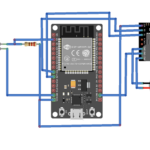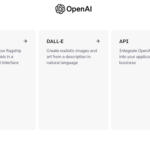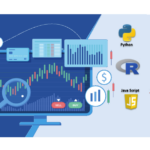ChatGTP, a language-based chatbot developed by OpenAI, has gained a lot of use and attention since its release in 2022. Since then, it and other chatbots — programs designed to mimic human language and conversation — have become increasingly common, used for providing content creation, marketing, programming, research, entertainment, customer service, and much more.
Embedded system designs are also affected by the rapid development of artificial intelligence. Microcontrollers have limited processing power and memory — both of which are significant to the speed, efficiency, and effectiveness of chatbots. Microcontrollers are typically not ideal for running advanced AI models that power most chatbots. But that’s changing.
Although running a chatbot directly on a microcontroller is still a niche concept, it’s possible to overcome some of its limitations. In this article, we’ll discuss the use of chatbots in embedded applications, as well as the methods employed to run chatbots with microcontroller or microcomputer-based applications.
 What are chatbots?
What are chatbots?
Chatbots are computer programs that simulate human conversation as text or audio. They’re designed to interpret and respond to user queries, requests, or commands. Chatbots have become excellent at interacting with users to provide information or complete a digital task.
Currently, there are three types of chatbot technologies.
1. Rule-based chatbots: follow a predefined set of rules and keywords to generate responses.
2. AI-based chatbots: use natural language processing (NLP) and machine learning to comprehend user intent and provide dynamic responses.
3. Hybrid chatbots: use rule-based and AI approaches for greater flexibility.
Chatbots that serve as computer programs can provide assistance or services 24/7, anytime and anywhere. They’re useful in automating tasks, interacting with a user, and enhancing the user experiences with technology.
Applications in embedded systems
Chatbots provide a useful medium for implementing NLP in embedded applications, enhancing user interactions through language.
Here are some typical chatbot applications with microcontrollers
Voice command recognition: one of the most common uses of chatbots in embedded devices, often now used in smart home systems, IoT devices, and automotive applications. It lets users control, interact, and configure devices through spoken language (such as setting an alarm or asking Siri to play music with an audio command). This is commonly applied in smart home systems, IoT devices, and automotive applications.
Troubleshooting and assistance: Chatbots can diagnose common issues with smart devices and guide users through troubleshooting steps. They can also connect users with human support personnel when needed.
Personalization: Chatbots serve as an active medium for interacting with users. The AI-based chatbots can “learn” user preferences. They can automate embedded systems or adjust smart device settings per the user’s usage pattern and behavior. This can lead to greater power efficiency in homes, automatically set appliances (like coffee makers) or alarms (at home or the office) for convenience and safety, and enhance a user’s overall comfort (adjusting thermostats or other devices as desired).
Conversational interfaces: chatbots with NLP capabilities enable smart embedded devices to converse and interact with users. This is useful for customer service kiosks, interactive displays, and information retrieval systems.
Machine interface: along with retrieval or task execution through user communication, chatbots can simplify interactions with complex industrial machinery. Machine operators can use chatbot-powered interfaces to monitor conditions, issue commands, receive diagnostic information, or authorize access to critical machines.
Training and support: chatbots have become helpful with on-the-job training in some industries. Embedded devices powered by chatbots can explain certain tasks or procedures, teach users specific operational steps, provide real-time assistance or support with new equipment, and assist with troubleshooting.
Predictive maintenance: chatbots can detect potential equipment failures by analyzing the sensor data and alerting maintenance personnel before breakdowns occur, minimizing downtime. As chatbots can run 24/7, they can continually monitor equipment and potentially resolve problems or suggest solutions for improvements.
Language translation: chatbots can provide language translation services (in text or audio form) in real-time using NLP, supporting users during travel or when learning a new language.
Text summarization: can summarize large volumes of text, making it easier for users to consume relevant information. This can be useful in embedded systems that support textual data, such as news readers or document summarizers. This is also useful in IoT applications that process and analyze large volumes of sensor data.
Reminders and notifications: smart gadgets with chatbots can be programmed to generate notifications and alerts. For example, they can remind users of appointments or to take medication by generating natural language prompts.
Emergency response: chatbots in wearable gadgets can provide emergency response and assistance as required, such as by contacting emergency services, guiding users through first-aid procedures, or providing emotional support.
Sentiment analysis: a tool embedded systems can employ to interpret and react to the emotional responses of human input. This applies to social robots, feedback analysis systems, or emotion-aware devices.
Gesture and language integration: supports an embedded system to interpret spoken commands and gestures to control a device or system.
Text-based search and retrieval: NLP-driven search functions let users interact with embedded systems using natural language queries. This benefits applications such as smart search engines, content retrieval systems, and knowledge-based interfaces.
Health and fitness tracking: chatbots can provide personalized feedback on activity levels, suggest workout routines based on certain goals, and answer questions about health data.
Text-to-Speech (TTS) and Speech-to-Text (STT): using AI-based chatbots, embedded systems can convert spoken language into written text (STT) and vice versa (TTS). This is useful in applications like voice assistants, accessibility tools, and communication devices.
Interaction with robots: supporting robots to “understand” human commands and intentions, leading to more intuitive and natural interactions.
Interactive educational tools: chatbots in educational devices can facilitate natural language interactions for learning purposes. They can guide students through educational activities, tell stories, play games, or make robots more engaging and interactive companions. The chatbots are also useful as language tutors or language learning tools.
Security and access control: used to enhance security by implementing voice-based access control systems. Users can use their voice as a secure authentication method for embedded devices.
Accessibility and assistance: chatbots can help individuals with disabilities control robots using voice commands, assist in daily activities, or provide companionship.
Running chatbots with microcontrollers
It’s not possible to run chatbots directly on microcontrollers, though many can run smaller LLM models and frameworks customized for edge devices. However, alternative approaches are used to implement chatbots in most embedded and IoT applications.
Here are some practices for implementing chatbots with microcontrollers.
Rule-based chatbots: rely on a set of pre-defined rules and keywords to respond to user input. These lightweight chatbots can run on basic microcontrollers, providing basic NLP capabilities in a smart device. However, the interactions with users are limited without with little flexibility. They also lack the natural language understanding of AI-powered chatbots.
Cloud-based chatbots: in these chatbots, the complex natural language processing is offloaded to a cloud-based chatbot platform. The microcontroller only connects the sensors and actuators, collecting user input and sending it to the cloud for processing. A cloud-based chatbot generates a response, which is sent back to the microcontroller and communicated via voice or text. In this method, the NLP functionality of the embedded system depends on internet connectivity and the efficiency of the cloud platform. However, it incorporates natural language and allows greater flexibility in user interactions.
Offline keyword recognition with limited responses: libraries like TinyML are used to train small keyword recognition models on the microcontroller. This model triggers pre-recorded responses or actions based on recognized keywords. This approach is useful in simple applications like voice-controlled devices, enabling NLP functionalities without a complex system and software design.
Chatbots for microcontroller
Below are a few chatbot options for implementing NLP functions in microcontroller-based systems.
ChatGPT on Cloud: several embedded applications incorporate NLP by integrating cloud-based services that run ChatGPT. The microcontroller captures the user input and sends it to a ChatGPT-based cloud service through an API. The responses are received by the online service and are displayed by the microcontroller on the device. For example, a microcontroller might retrieve user input through a keyboard or keypad and send it to a remote server for processing. Then, the server processes the request and sends a response to the microcontroller, which it communicates through voice or display.
Microsoft Azure Bot Service: a popular cloud-based chatbot that integrates with various channels like voice assistants, messaging apps, or web interfaces — offering users flexibility in how they interact with their device. This platform also features design bots with buttons, images, and carousels to provide visually appealing and interactive experiences on an embedded device’s interface.
The bot can track previous interactions and adapt responses accordingly, offering a more personalized and contextual experience. It allows users to access device information, control settings, or trigger actions through natural language commands. A device can also delegate complex tasks or workflows to the bot, freeing up resources for core functionalities. It can manage devices from a central location and ensures the entire data communication is secure and private.
Dialogflow: Google’s cloud-based NLP platform is useful for embedded applications, depending on the project. It offers lightweight Dialogflow Agents (LDFAs) for devices with limited resources. The users can combine cloud-based and on-device functionalities for flexibility and optimal performance.
Dialogflow facilitates offline speech recognition engines to handle user input without internet connectivity. It’s suited for cloud-based deployment, though its agents can be used offline. It offers pre-built integrations with other Google services like Google Assistant, Calendar, and Maps, which expand a bot’s capabilities and allow for tailored conversation flows. It tracks previous interactions and adapts responses accordingly, providing a personalized and contextual experience. It has a user-friendly interface with many drag-and-drop tools, ideally requiring knowledge of Dialogflow and its related development tools.
ChatScript: a free, open-source, rule-based chatbot engine with extensive documentation and a large community base. It can run efficiently on any low-powered device due to its rule-based approach. It’s flexible in scripting language and allows tailoring the chatbot’s responses and behavior to specific needs and scenarios within IoT and embedded systems. It operates effectively even without an internet connection. However, it cannot handle complex language, ambiguities, and nuances. It also lacks built-in integrations, context awareness, and advanced analytics capabilities.
Managing complex rules and logic for handling diverse user interactions is challenging for a rule-based approach. ChatScript is suitable for incorporating simple NLP functions in embedded systems and IoT projects that do not depend on internet connectivity.
AIML: stands for Artificial Intelligence Markup Language, a popular rule-based chatbot language based on simplicity and ease of use. It’s ideal for integration with simple educational toys, voice interaction in embedded devices, and testing simple proof-of-concept prototypes like voice interaction functionality. AIML relies on pattern matching and pre-defined rules. The use of AIML is decreasing as AI improves because of its lack of built-in functionalities like context awareness, sentiment analysis, personalization, security concerns, and low scalability.
Edge Impulse: a platform for developing and deploying TinyML models on microcontrollers and IoT devices. It offers a user-friendly interface with many drag-and-drop tools and visual workflows and integrates with various sensors. Users can train and run machine learning models directly on the device, eliminating the need for cloud processing and reducing latency. It automatically optimizes the models for size and efficiency, ensuring they run smoothly on microcontrollers. Various machine learning models like keyword spotting, anomaly detection, predictive maintenance, gesture recognition, and AI functions can be deployed without hassle. This low-cost, flexible, and efficient platform is best used for simpler tasks.
Tensorflow Lite Micro: a lightweight version of TensorFlow useful for deploying small conversational models on microcontrollers. Models run directly on the device and can operate without an internet connection. This reduces the power consumption of the embedded system. Tensorflow Lite is useful for battery-powered IoT devices and resource-constrained microcontrollers. Developers can choose from a variety of pre-trained models or train on their own, tailoring the functionality to the specific needs and the hardware platform. It excels at simpler tasks and may not be suitable for running complex machine learning or deep learning models. It supports many popular platforms, but not all microcontrollers and hardware platforms.
Rasa NLU: a powerful open-source framework for Natural Language Understanding (NLU), enabling machines to extract meaning and intent from conversations. It’s possible to run Rasa NLU on a Raspberry Pi or similar devices and communicate with it using a microcontroller.
Rasa excels at understanding the meaning and intent behind user queries, even with a limited vocabulary or ambiguous phrases typically used for conversational AI for devices. Training custom NLU models on a user’s specific domain’s language and terminology is possible, ensuring a precise understanding of intent. It integrates seamlessly with other chatbot platforms and conversational AI tools and features multi-lingual support. Most Rasa NLU models require an internet connection for processing.
ChatterBot: is a Python library for creating chatbots. It can be used to implement a chatbot on a microcomputer like Raspberry Pi and communicate with it from a microcontroller. It enables natural language interactions with embedded and IoT devices, allowing users to control functionalities, access information, or ask questions through voice commands or text messages. It can adapt the responses and recommendations based on user preferences, past interactions, and real-time data from sensors or the environment.
Snips.ai: Snips.ai: an open-source voice platform that includes an NLU component. It’s a prominent platform for developing voice assistants and conversational interfaces for embedded systems and the IoT, making it ideal for limited internet connectivity or latency matters. Its models are optimized for resource-constrained embedded devices, requiring minimal RAM, CPU, and storage space. This allows integration on most low-power devices. The models can be trained on specific domain’s language and terminology. The platform prioritizes privacy, local processing, and resource efficiency.
Conclusion
Chatbots have many applications in embedded and IoT devices. They play a crucial role in enabling NLP functionalities at the edge devices. For simpler tasks, rule-based chatbots can be directly deployed on microcontrollers. However, offloading NLP functionalities to a cloud-based chatbot service might be necessary, depending on the complexity of the embedded tasks.
Several machine learning models can also be deployed on microcontrollers using Edge Impulse or Tensor Flow Lite Micro to enable NLP capabilities in microcontroller-based devices. In many applications, the microcontroller is accompanied by a microcomputer within the device. More complex chatbots can then run on the microcomputer while offloading essential embedded tasks to the microcontroller.
A hybrid approach that combines rule-based chatbots with cloud-based chatbot services is also an option. Some popular chatbots and cloud-based chatbot services include ChatGPT-on-Cloud, Microsoft Azure Bot Service, Dialogflow, ChatScript, AIML, Rasa NLU, ChatterBot, and Snips.ai. The Tensor Flow Lite Micro and Edge Impulse are ideal for deploying machine learning models on microcontrollers to implement NLP.
You may also like:
Filed Under: Tech Articles








Questions related to this article?
👉Ask and discuss on EDAboard.com and Electro-Tech-Online.com forums.
Tell Us What You Think!!
You must be logged in to post a comment.